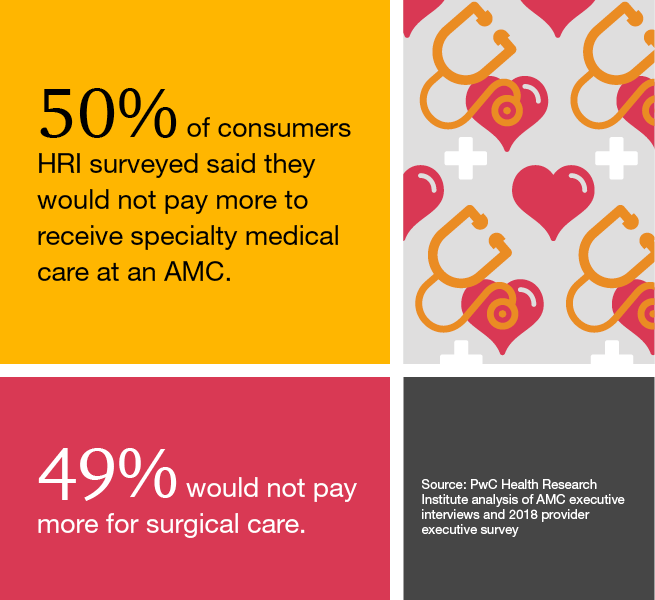Forging new identities for academic medical centers of the future
The nation’s academic medical centers (AMCs) sit at the very heart of the $3.6 trillion US health industry, caring for millions of people every year during some of the most physically and mentally challenging times of their lives. And yet these important institutions are facing intensifying pressures at a time of profound change in their industry. While their position in the industry is crucial, America’s AMCs likely will need to make some dramatic changes if they are to continue to thrive. They will need to invest in business models that have the best financial returns.
Many consumers are unwilling to pay more for care at an AMC

The tripartite mission is expanding
Many AMCs are expanding their clinical missions to include wellness and the social determinants of health, broadening their research missions to include population health and personalized medicine, and expanding their educational missions by training their own workforces in emerging technologies and digital skills. Some AMCs are even intensifying their focus on the health of the communities they serve.
Successful AMCs will become hybrids of these models
Over the next decade, AMCs will have to evolve into hybrids of these models to continue to fulfill the tripartite mission and be competitive. For AMCs this evolution is especially important; if they instead choose the status quo their margins are at risk of staying small or eroding, meaning they may not be able to bring value around training and research as they can today.


Contact us
















